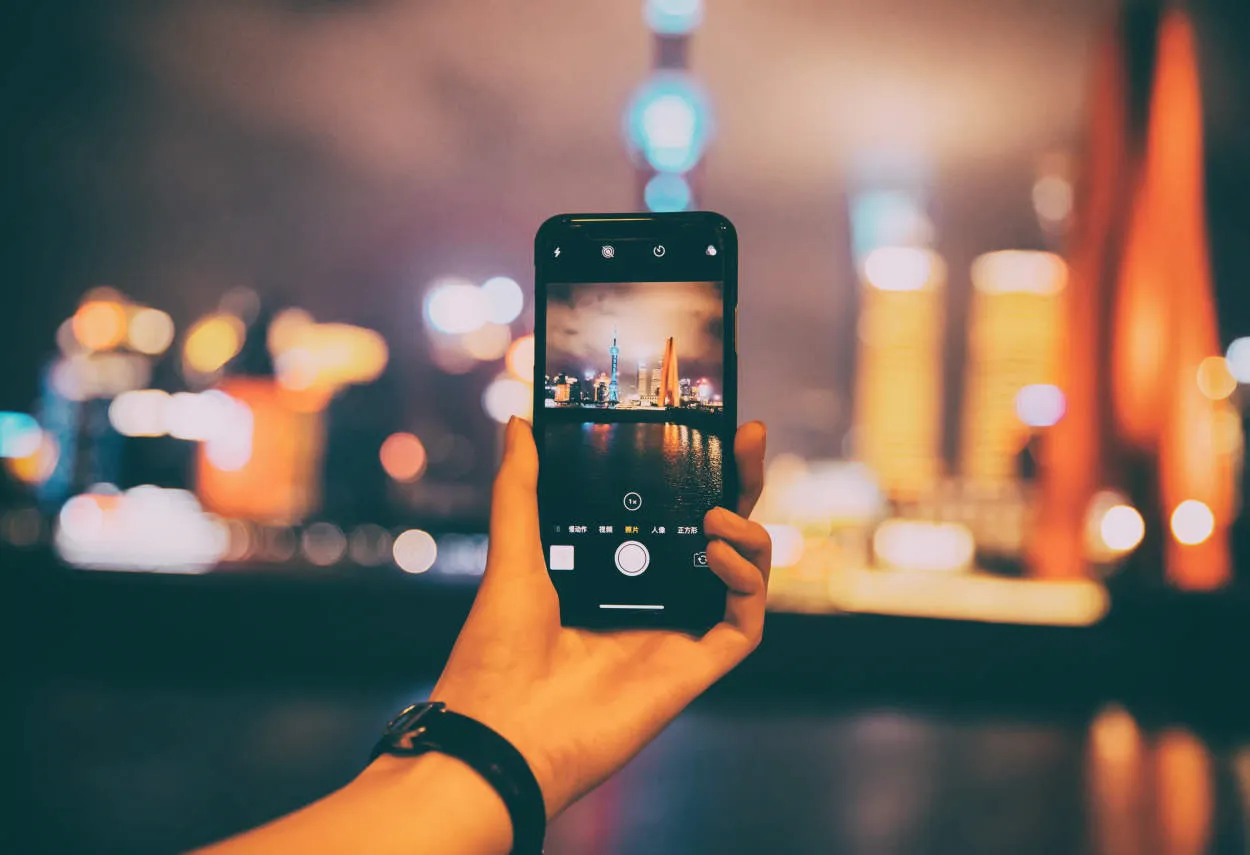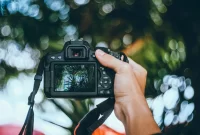Welcome to “The Ultimate Guide to Smartphone Photography Tricks”! In this comprehensive article, we will explore a wide range of tips, techniques, and creative hacks to help you capture stunning photos using just your smartphone. Whether you’re a beginner or a seasoned photographer, get ready to unlock the full potential of your phone’s camera and take your photography skills to new heights.
Capturing Stunning Macro Shots with a Smartphone
In today’s era of advanced smartphone cameras, capturing impressive macro shots no longer requires expensive equipment. With a few handy tricks, you can unleash the hidden potential of your smartphone and produce amazing close-up photographs.
1. Clean the Lens
Before diving into macro photography, ensure that your smartphone lens is free from any dirt or smudges. Cleaning it with a microfiber cloth will help avoid any unwanted blurriness or distortion in your shots.
2. Adjust Focus and Exposure
Most smartphone cameras allow you to manually adjust the focus and exposure settings. While in macro mode, tap on the subject to make it the focal point and tweak the exposure to ensure perfect lighting.
3. Get Closer
One of the key aspects of macro photography is capturing intricate details. Move as close as possible to the subject to emphasize its texture, patterns, and unique characteristics. Don’t be afraid to experiment with different angles.
4. Use Natural Lighting
Avoid relying solely on the smartphone’s flash, as it can create harsh lighting and shadows. Instead, make the most of natural light sources to achieve soft, diffused lighting that will enhance the details in your macro shots.
5. Utilize Accessories
To take your macro photography to the next level, consider using additional accessories such as clip-on lenses or macro lens attachments made specifically for smartphones. These accessories can help magnify the subject and improve the overall image quality.
6. Experiment with Composition
Macro photography offers endless opportunities for creative compositions. Explore different perspectives, angles, and framing techniques to create visually captivating shots. Play with depth of field to highlight specific elements and create a sense of depth.
Unlock the Potential of Your Smartphone Camera
With the right techniques and a dash of creativity, your smartphone can become a powerful tool for capturing stunning macro shots. Explore the world of miniatures and reveal extraordinary details that often go unnoticed. So grab your phone, get close, and let your imagination roam free!
Using HDR Mode for Enhanced Dynamic Range
Smartphone photography has come a long way, with modern devices equipped with impressive camera capabilities. One of the features that can greatly improve the quality of your photos is the HDR (High Dynamic Range) mode. HDR mode allows you to capture a wider range of light and dark tones in a single photo, resulting in images that appear more balanced and vibrant.
When HDR mode is enabled, your smartphone camera takes multiple photos at different exposures and combines them to create a final image that captures the best details and color in both bright and dark areas. This technique is particularly useful in high-contrast scenes, such as landscapes with a bright sky and dark foreground.
To use HDR mode, open your smartphone camera app and look for the HDR option, usually found in the settings or shooting mode menu. Once enabled, your camera will automatically analyze the scene and determine the best exposure settings. It’s important to keep your hands steady while the camera captures the multiple exposures to ensure a sharp final image.
While HDR can greatly enhance your photos, it’s not always necessary or suitable for every situation. It works best in well-lit environments where there are both bright and dark elements. In low-light conditions or when capturing fast-moving subjects, HDR mode may result in blurred images due to the longer processing time.
Experimenting with HDR mode is key to understanding its strengths and limitations. Try capturing the same scene with and without HDR to see the difference in dynamic range and overall image quality. You can also adjust the HDR settings in some camera apps to achieve a more subtle or dramatic effect.
In conclusion, utilizing the HDR mode on your smartphone can immensely improve your photography by capturing more detail and vibrant colors in high-contrast scenes. However, it’s important to use it judiciously and experiment with different settings to achieve the desired results. So, the next time you encounter a challenging lighting situation, consider using HDR mode to optimize your smartphone photography.
Exploring the Creative Potential of Panoramic Shots
When it comes to smartphone photography, there are countless tricks and techniques to enhance your skills and capture stunning images. One technique that stands out is the use of panoramic shots. This method allows you to capture wide-angle views and explore the creative potential of your smartphone camera.
With panoramic shots, you can capture breathtaking landscapes, city skylines, and even group photos without worrying about fitting everything into the frame. This technique involves capturing a series of images while panning your phone horizontally or vertically, and then stitching them together to create a seamless panorama.
Tips for capturing impressive panoramic shots:
- Steady your hand: To ensure a smooth and seamless result, keep your hand steady while capturing each image. Consider using a tripod or stabilizing your phone against a solid surface for clearer shots.
- Select the right mode: Most smartphone cameras have a dedicated panorama mode. Utilize this mode to guide you through capturing the sequence of images and ensure that they align correctly.
- Pay attention to the composition: While capturing a wide-angle view, it’s essential to consider the composition. Look for interesting foreground elements, leading lines, and symmetry to add depth and visual interest to your panorama.
- Experiment with different angles: Don’t limit yourself to just horizontal panoramas. Try capturing vertical panoramas to showcase tall structures or unique perspectives.
By exploring the creative potential of panoramic shots, you can elevate your smartphone photography to new heights. Whether you’re capturing stunning landscapes or showcasing architectural marvels, this technique allows you to capture the grandeur and beauty of your surroundings in a single frame.
Implementing Composition Techniques for Better Results
When it comes to smartphone photography, mastering composition techniques can greatly enhance the quality of your photos. Whether you are a beginner or an experienced photographer, understanding and implementing these techniques can take your smartphone photography to the next level.
1. Rule of Thirds
The rule of thirds is a fundamental principle in photography composition. It involves mentally dividing your frame into a grid of nine equal sections using two horizontal and two vertical lines. By placing your subject along these lines or at their intersections, you can create a visually balanced and interesting composition.
2. Leading Lines
Leading lines are elements in your photo that draw the viewer’s eye towards the main subject. They can be actual lines present in the scene or implied lines created by elements like roads, fences, or natural features. By utilizing leading lines, you can add depth, guide the viewer’s gaze, and create a dynamic composition.
3. Framing
Framing involves using elements in the scene to create a frame around your subject. This can be done by incorporating natural frames like archways, windows, or trees, or by using man-made objects such as doorways or bridges. By framing your subject, you can add context, bring focus to the main subject, and create a sense of depth in your photos.
4. Symmetry and Patterns
Symmetry and patterns can add a sense of aesthetics and balance to your smartphone photos. Look for symmetrical elements in your surroundings, such as reflections in water or buildings with identical structures. Additionally, capturing patterns like repeating shapes or textures can create visually captivating images.
5. Negative Space
Negative space refers to the empty or unoccupied areas around the main subject. By incorporating negative space in your compositions, you can highlight and emphasize your subject, create a minimalist and clean aesthetic, and evoke a sense of calm or solitude.
By implementing these composition techniques in your smartphone photography, you can transform ordinary moments into extraordinary visual stories. Experiment with each technique and find what works best for your style and subjects. Remember, practice is key to mastering composition, so keep shooting and exploring the endless creative possibilities with your smartphone camera!
Conclusion
In conclusion, mastering smartphone photography opens up endless possibilities for capturing stunning images. By utilizing the various tricks and techniques covered in this guide, you can take your photography skills to the next level. From understanding composition and lighting to using editing apps, these tips will help elevate your smartphone photography game. With practice and experimentation, you’ll be amazed at the professional-quality photos you can achieve using just your smartphone.




